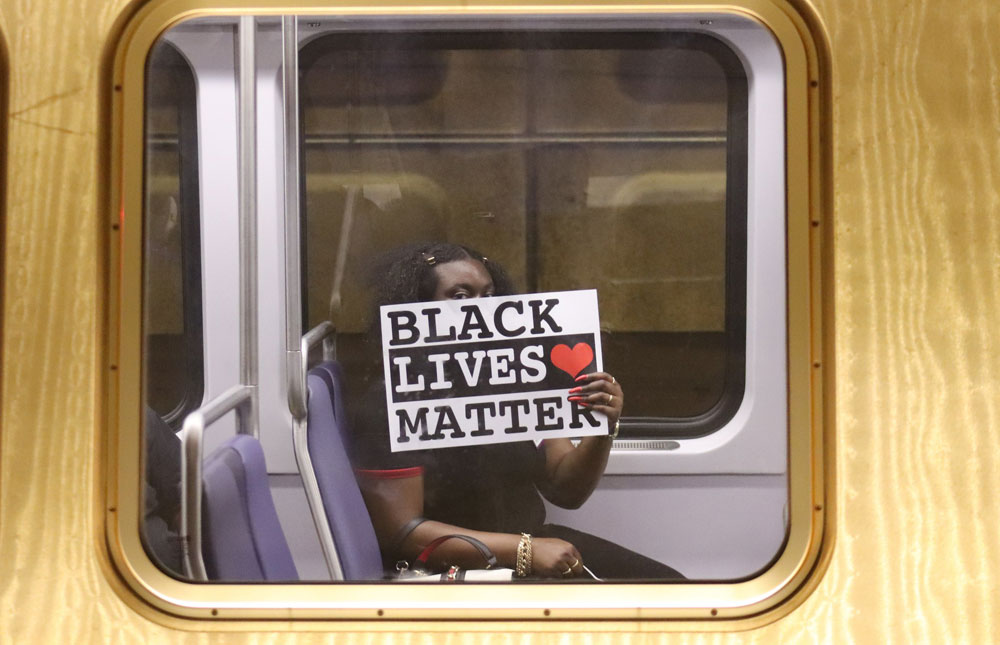
June 25, 2020; The Hill, Washington Post, and Chronicle of Higher Education
As the 8 minutes and 46 seconds of video capturing the murder of George Floyd made it impossible to ignore the scourge of police violence and racism, the almost six months that COVID-19 has been spreading has made it impossible to ignore the nation’s embedded economic inequity. The longer we are in throes of this pandemic, the more we are forced to come to grips with how we have built our nation in ways that benefit the white community and leave everyone else behind.
COVID-19 mortality data compiled by American Public Media’s Research Lab leaves no doubt of this disparity:
- 1 in 1,500 Black Americans has died (or 65.8 deaths per 100,000)
- 1 in 2,300 Indigenous Americans has died (or 43.2 deaths per 100,000)
- 1 in 3,100 Pacific Islander Americans has died (or 32.7 deaths per 100,000)
- 1 in 3,200 Latinx Americans has died (or 31.1 deaths per 100,000)
- 1 in 3,600 White Americans has died (or 28.5 deaths per 100,000)
- 1 in 3,700 Asian Americans has died (or 27.7 deaths per 100,000)
Just this week, NPQ reported on the results of a recent study of small business failures during the pandemic by economist Robert Fairlie that again showed us how unequal things are.
Businesses owned by whites had a 17 percent shutdown rate, compared to 41 percent for Black owned businesses, with Latinx-owned businesses (32 percent) and Asian American-owned businesses (26 percent) falling in between. Immigrant-owned businesses closed at twice the rate as businesses owned by native-born US citizens (36 percent versus 18 percent).
Meanwhile, The Hill shows how different communities facing the rise in unemployment: “Out of the general population surveyed…31 percent of [Latinx persons] and 27 percent of people with incomes below $50,000 reported job disruption, compared to 18 percent of white respondents and 16 percent of those with higher incomes.”
The novel coronavirus did not create these inequities; it came to a country where income, wealth, housing, and education are already unfairly shared. Writing in the Washington Post earlier this week, Sergio Peçanha summarized it in a stark sentence: “The United States is a vastly different country, depending on the color of your skin…whites live in one America, and Blacks live in another.”
Sign up for our free newsletters
Subscribe to NPQ's newsletters to have our top stories delivered directly to your inbox.
By signing up, you agree to our privacy policy and terms of use, and to receive messages from NPQ and our partners.
Blacks live in a country where the economy is always in recovery. Even though white Americans haven’t seen an unemployment rate near 15 percent in decades, African Americans have seen it many times—about once a decade over the past 50 years.…
Underpaid or unable to buy a home, a large part of the black community remains unable to gain access to the main way that whites have achieved wealth and middle-class stability. As a result, the net worth of white households is now 10 times greater than black households.
Wealth grants access to better housing, better education, and better healthcare. COVID-19 is forcing us to understand the harm that’s done to those left wanting. A new study from researchers at Arizona State University, as covered in the Chronicle of Higher Education, “found that undergraduate students at their university have suffered noticeably—and unequally—because of the pandemic.”
“Low-income students at the university were 55 percent more likely to delay graduation than their more affluent peers,” they found, “and 41 percent more likely to change their major.” Delaying graduation will only make it harder for these students to close the already wide wealth gap.
Native American educator Ryan Benally, writing in The Hill, describes the underlying conditions that COVID-19 in American Indian communities that leaves them more vulnerable. “Lack of resources, lack of medical equipment, lack of access to adequate medical services, lack of food, lack of water and lack of the basic necessities of life takes its toll. The land of opportunity doesn’t seem so substantial when it comes to the first people of this country.”
When COVID-19 is under better control, the stark inequities of our nation will remain unless we change them radically. We cannot choose to return to blissful ignorance, to the belief we have an unequal world only because some of us have worked harder and been more creative. We cannot delude ourselves that everyone can pull themselves up by their bootstraps and that those who find themselves unemployed, living in poverty, uneducated, or sick have only themselves to blame. We return to this fantasy world at our own risk. As Benally observes, “The pain and fury…is only natural in the face of systemic racial disparagement—the oppressor kneeling on the oppressed.”—Martin Levine













